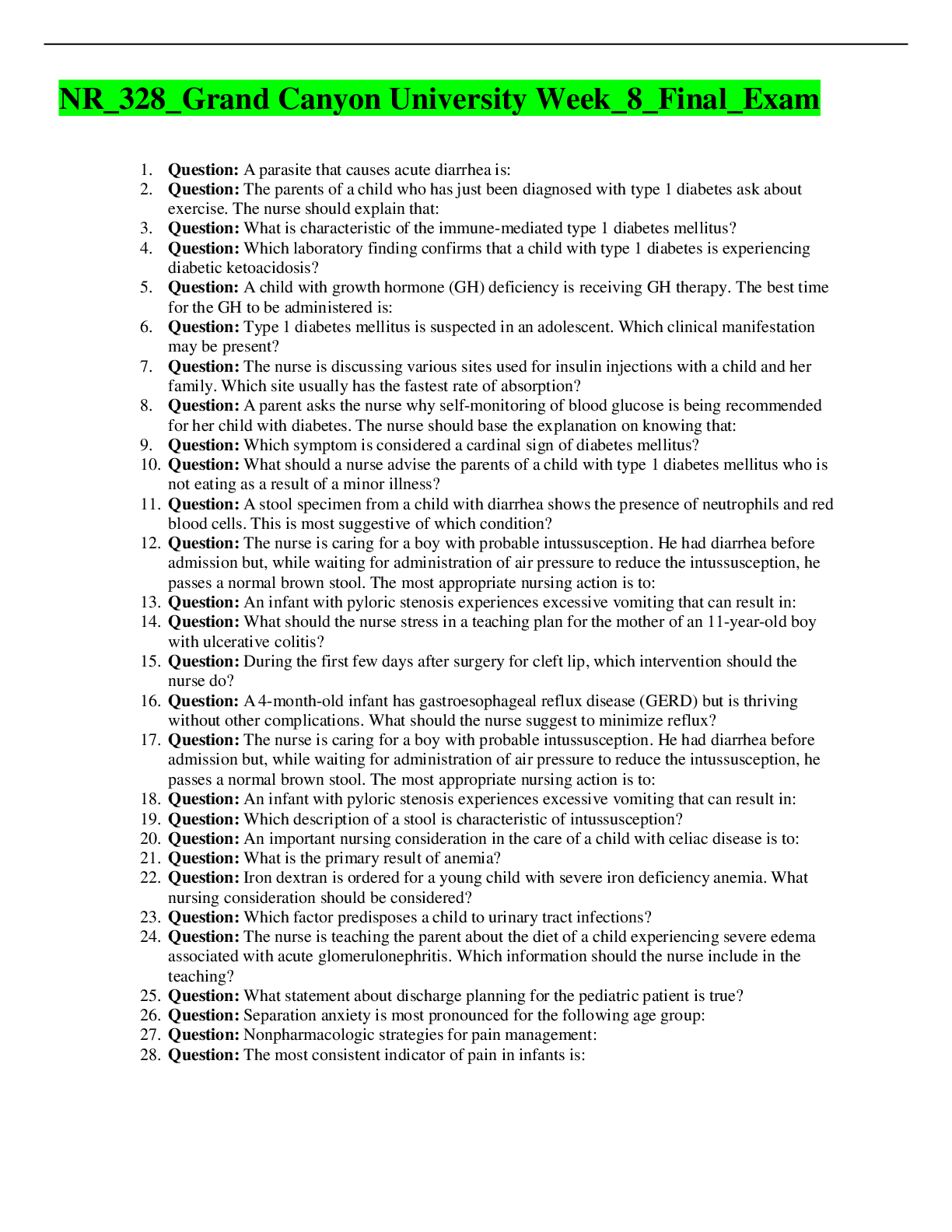Statistics > QUESTIONS & ANSWERS > STAT 500 Homework 1 Solution (Penn State University) (All)
STAT 500 Homework 1 Solution (Penn State University)
Document Content and Description Below
Homework 1 (Six problems) Lessons 1 Problem 1 (20 points): Study 1: A British study compared 966 patients with brain cancer to 1716 patients without brain cancer. The patients’ cell phone ... use was measured using a questionnaire. Cell phone use for the two groups was similar. Study 2: A study published in The Journal of the American Medical Association (Volkow et. Al., 2011), indicates that cell phone use speeds up activity in the brain. As part of a randomized crossover study, 47 participants were fitted with a cell phone device on each ear and then underwent two positron emission topography, or PET, scans to measure a specific type of brain activity. During on scan, the cell phones were both turned off. During the other scan, an automated 50-minute muted call was made to the phone on the right ear. The order of when the call was received (for the first or second scan) was randomized. Comparison of the PET scans showed a significant increase in activity in the part of the brain closest to the antenna during the transmission of the automated call. Problem 2 (20 points): A March 2011 Gallup poll reported that 60% of Americans favored offshore drilling as a means of reducing U.S. dependence on foreign oil. The poll was based on the responses of n = 1021 individuals and resulted in a margin of error of approximately 3%. Find the approximated margin of error had the poll been based on a sample of size: Problem 3 (20 points): A researcher wants to compare student loan debt for students who attend four-year public universities with those who attend four –year private universities. She plans to take a random sample of 100 recent graduates of public universities and 100 recent graduates of private universities. Which type of random sampling is utilized in her study design? Problem 4 (20 points): If you want to conduct a study with humans to see if cell phone use makes brain cancer more likely, explain why an observational study is more realistic than an experiment. Problem 5 (10 points): Without using technical language, explain the difference between observational and experimental studies to someone who has not studied statistics. Include in your explanation a primary advantage of using an experimental study to an observational study. Problem 6 (10 points): Identify each of the following as either categorical or quantitative. If categorical is it binary, nominal, or ordinal? If quantitative is it continuous or discrete? Finally, provide one graph choice that would be best choice to display the data. [Show More]
Last updated: 2 years ago
Preview 1 out of 3 pages
.png)
Buy this document to get the full access instantly
Instant Download Access after purchase
Buy NowInstant download
We Accept:

Reviews( 0 )
$14.00
Can't find what you want? Try our AI powered Search
Document information
Connected school, study & course
About the document
Uploaded On
Sep 22, 2020
Number of pages
3
Written in
Additional information
This document has been written for:
Uploaded
Sep 22, 2020
Downloads
0
Views
154


 Questions and Answers (latest Update), All Correct, Download to Score A.png)






, (A Grade), Questions and Answers, All Correct Study Guide, Download to Score A.png)
, Questions and Answers, All Correct Study Guide, Download to Score A.png)
, Latest Questions and Answers with Explanations, All Correct Study Guide, Download to Score A.png)
.png)
.png)
.png)
.png)
.png)
.png)
.png)
.png)
 (Penn State University).png)
Fluid Balance & Blood Health.png)
 18 Combined Versions.png)

